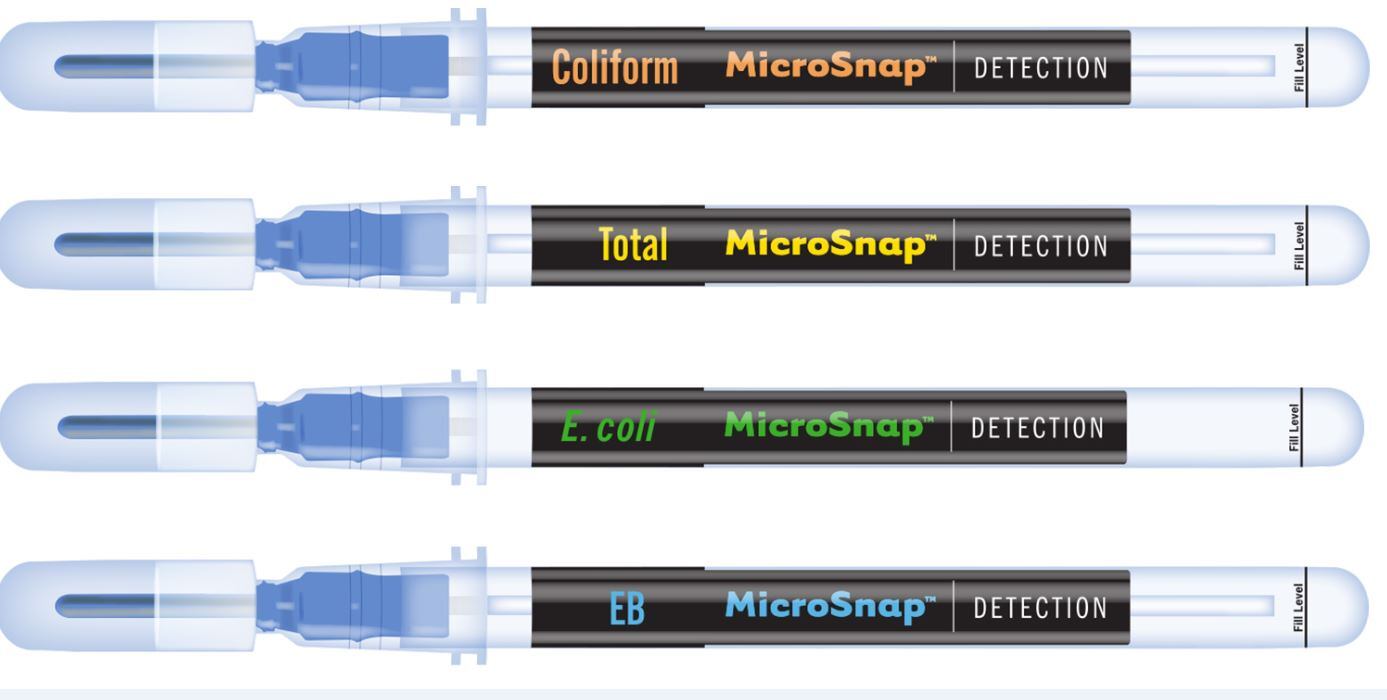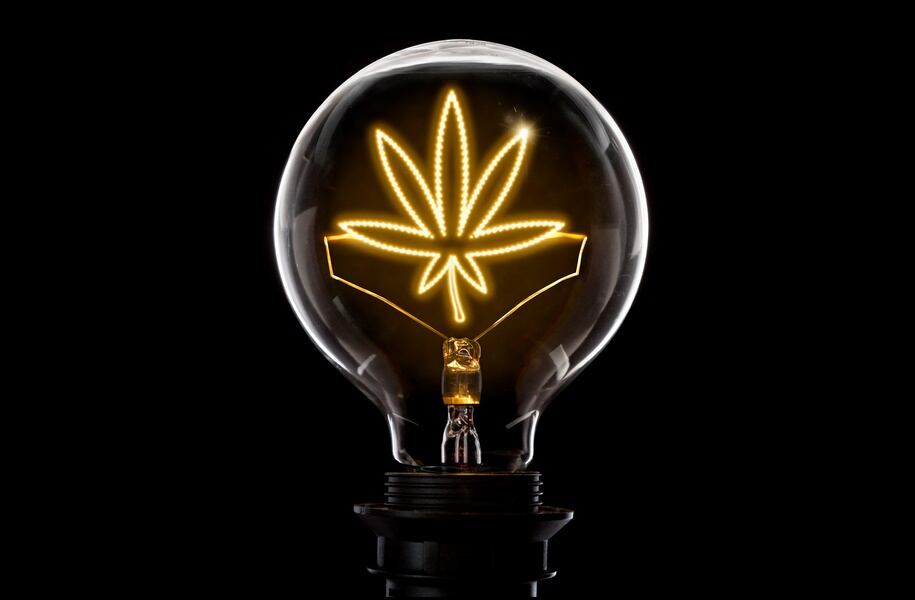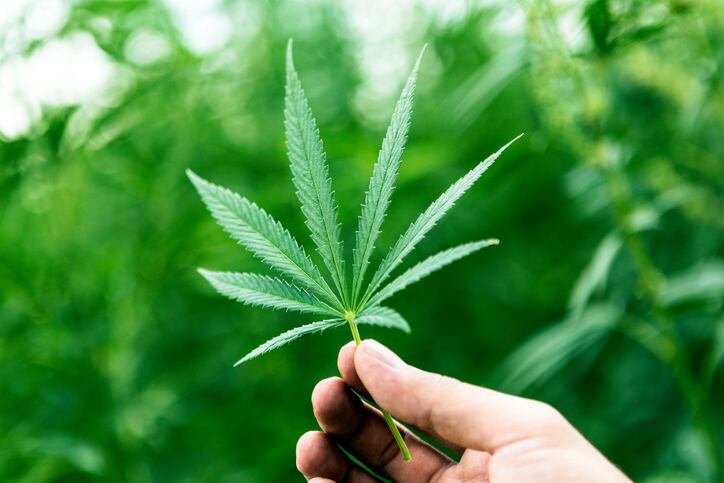In response to these safety hazards, it claims it has developed a new method for rapid detection of potential bacterial pathogens in cannabis-infused cookies and cannabis flowers with its MicroSnap bioluminescence technology.
Relative Light Units
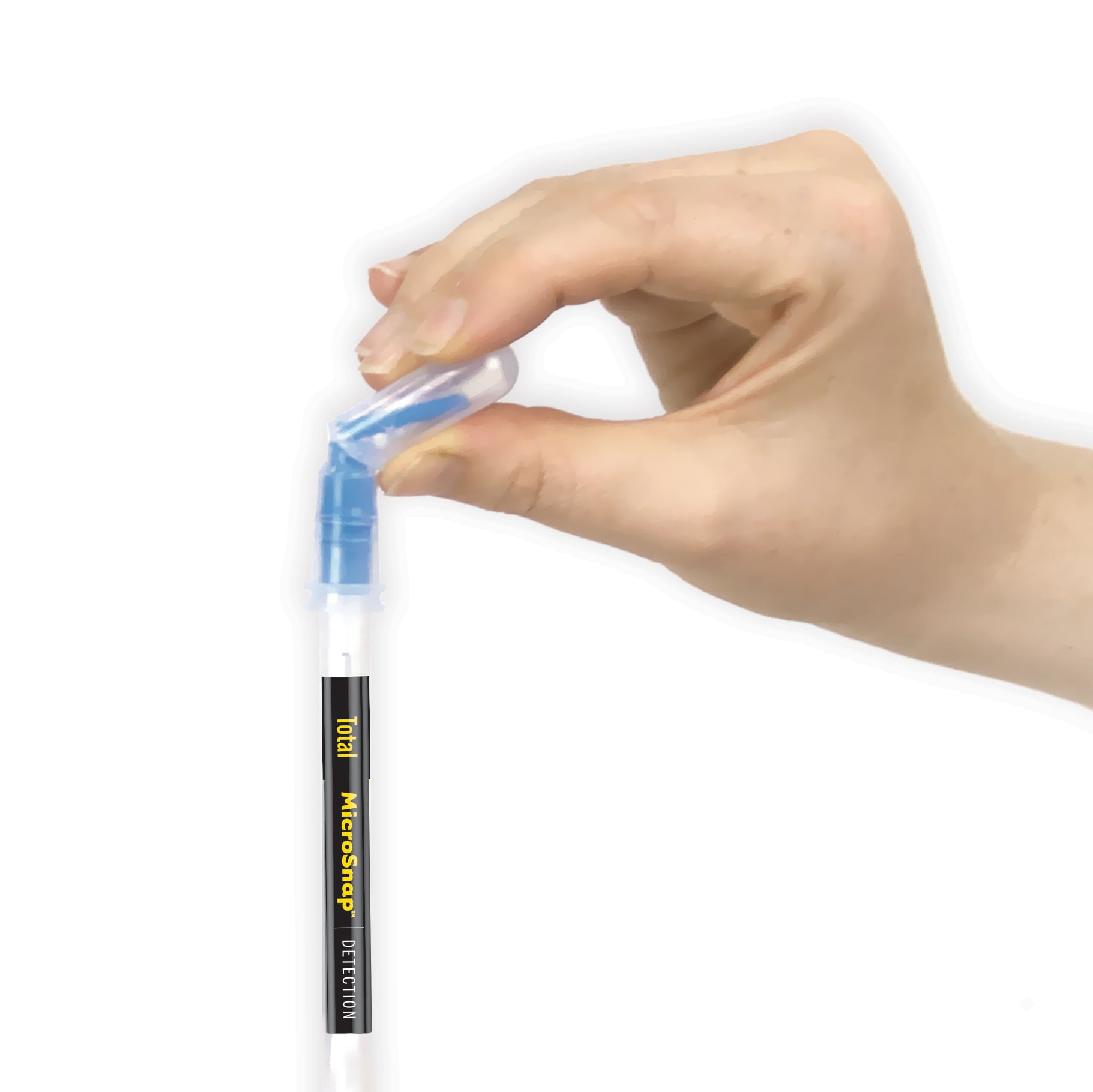
The way MicroSnap bioluminescence works is like a swab, generating light when enzymes characteristic of the target bacteria react with specific molecules in a test. Light reactions are then quantified as RLUs (Relative Light Units), which can determine any possible contamination over a threshold value determined by the tested substances.
Hygiena released the results of a study at the International Association for Food Protection (IAFP) in Louisville, Kentucky, where it showed how MicroSnap can detect Enterobacter, Coliform and Total Viable Count bacteria within five hours in spiked samples of cannabis flowers and infused edible cookies.
Brandon Katz, research scientist, Hygiena, said by reading the results in an EnSURE or SystemSure machine for relative light units the process is easier than PCR (Polymerase Chain Reaction), cell culture, or WGS (Whole Genome Sequencing).
“Our study shows rapid microbiological methods can be successfully applied to the growing cannabis food industry,” said Katz.
“We are excited to be able to announce these positive findings and provide a technology which can reduce contamination hazards in cannabis processing.”
Hygiena’s MicroSnap products (separate ones for E. coli, coliform, Enterobacter, and total viable count) have been around since 2012 and are used in a number of food settings. They were AOAC verified in 2012-2013 and the latest method and study is focusing on cannabis-infused food.
Katz claims now is the time to invest in technology in this area because the cannabis-infused food and beverage market is growing. Some US states have already released certain safety regulations and the US FDA has begun to regulate hemp-related products for safety. According to recent market research studies, Europe's cannabis and CBD markets are set to continue growing 'exponentially' over the next few years and regulators in Europe are now taking a closer look at the market for foods and cosmetics which contain CBD.
Even though cannabis has a diverse microbiome of beneficial microbes that do not harm humans, the legalization of cannabis in certain countries worldwide has led to a need for more rapid testing of products and it is necessary to determine minimum threshold values that indicate safety.
Hygiena MicroSnap study
- The lowest concentration of experimentally inoculated bacteria in cannabis-infused suspensions, which varied depending upon target bacteria and sample types, was detected in 8 hours.
- Thresholds were set using the background signal average and three times standard deviations; for Coliform, the lowest concentration of potential pathogens was detected in 8 hours. The lowest inoculum for cannabis flower and edible product was detected after 5 and 6 hours. RLU thresholds of positive results ranged from 8 to 250 RLUs.
- For Enterobacter, detection in all flower strains occurred within 8-hour and as early as the 5th hour. RLU thresholds for all strains were >2 RLUs.
- For Total Viable Count, detection occurred within 8 hours for all three strains. The lowest bacterial concentration with edible was detected in 7 hours. RLU thresholds were >8 RLU for strain 1 and >3 RLU for the other two strains and the edible.
As an example, UK sweet expert Andy Baxendale is working with confectionery manufacturer Sweetdreams to produce products combining cannabis derivative CBD oil with milk, white or dark chocolate coatings, including: solid dark chocolate balls, malt balls (Malteser type products), almonds, goji berries, cranberries, honeycomb and yoghurt coated fruits.
'Naughty' chocolate treat
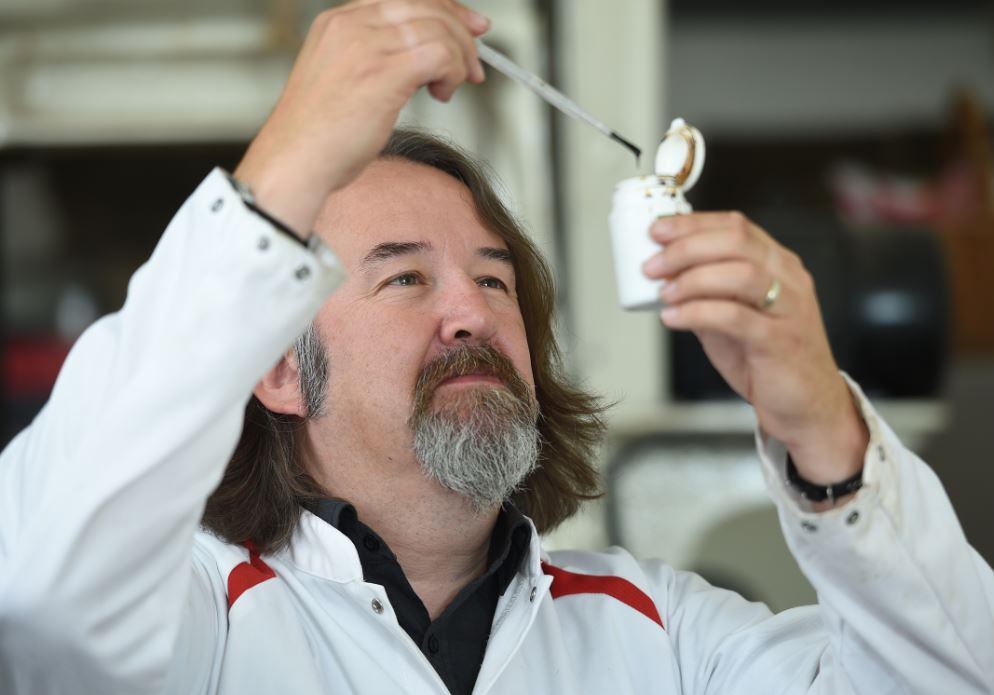
The work is continuing on an ongoing basis as the demand is constant for these type of products at the moment and chocolate is an easy medium for people to eat, especially if they feel that their “naughty” treat can somehow now benefit from CBD oil.
Speaking about Hygiena’s announcement, Baxendale said this type of technology has been in use for several years in the food industry to detect when equipment has been insufficiently cleaned, so it appears to be a useful extension of that technology.
“However, the cleaning application provided an instant reading – this method (MicroSnap) appears to take significantly longer and in actual fact is not that much quicker than traditional microbiological methods,” he added.
“It will certainly provide an alternative to tests available via microbiological laboratories, but to become widely accepted it will have to be validated and verified by food regulation authorities.”
In terms of higher risk products that contain unprocessed cannabis varieties, Baxendale said the MicroSnap bioluminescence technology will cut down the time needed to verify a product safety.
“In the case of confectionery products that utilise mainly processed cannabis extracts – for example THC or CBD, the processing of the additions combined with the inherent product safety of goods (stemming from high sugar content and low water activity) renders these products extremely safe in terms of microbial activity, so the traditional tests are fine – if one of the new tests were needed it would only be the TVC test – typical values for sugar or chocolate confectionery are less than 100cfu/g rendering them virtually sterile,” he said.
On the beverage side, CBD contenders in the drinks industry include Coke which admitted it is “closely watching” the growth of CBD, as an ingredient in what it called “functional wellness beverages”; Constellation brands, which owns Corona beer, Svedka vodka and Casa Noble tequila, is investing an additional $4 billion in the Canadian cannabis company Canopy Growth; Lagunitas has launched a cannabis infused drink using THC and CBD and Cannawine is now on the market.
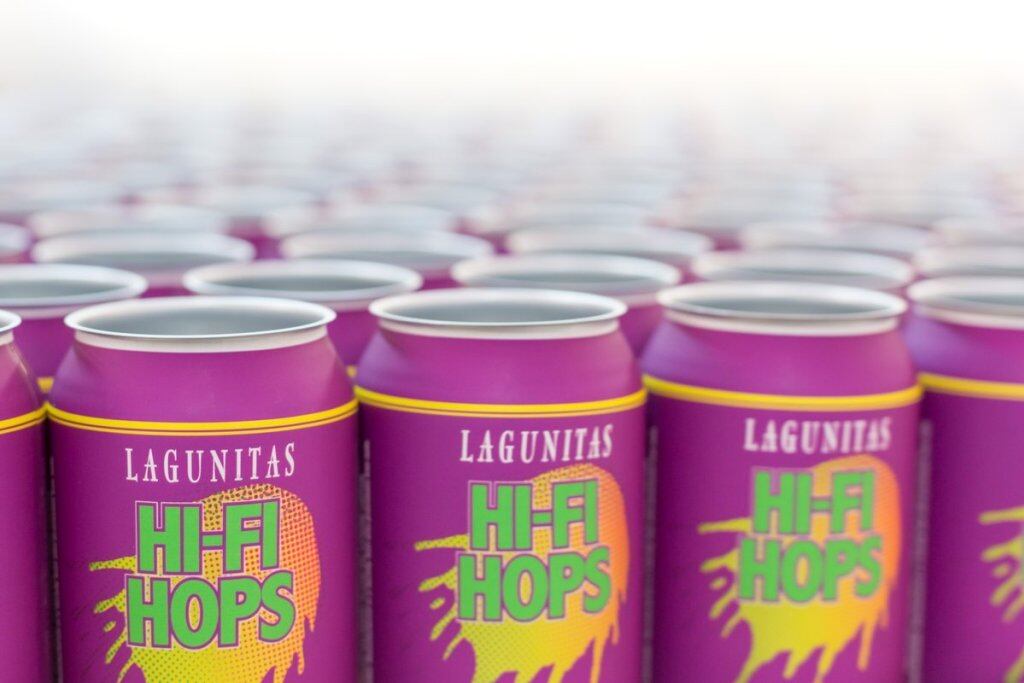
YesMore Agency
Dan Hooper, director, client services, drinks marketing specialists YesMore Agency, said from a brand’s point of view, it may be a good idea to track some crops, as we start to see cannabis being used in consumables within big companies like Lagunitas and Heineken.
“There’s a benefit in some sort of guarantee to make sure the THC/CBD they place in their drinks is sourced from reputable sources, especially as they operate across markets where the legal status of the product varies. So there’s clearly something here that may appeal to many brands,” he said.

“However, from a consumers’ perspective, I wonder if this will change as the market matures and cannabis becomes like any other ingredient. And I wonder how much this sort of tracing technology will matter to consumers - they may feel reassured by simply buying products from a reputable brand - or it may turn them off.”
Hooper added, with any new development in the market, there’s always an influx of creative solutions. But he does not know if there will be an influx of products like Hygiena’s MicroSnap bioluminescence.
“Whilst this technology is innovative, there may be less complex or invasive ways to track the cannabis as it makes its way into products, which may be as appealing. There are other models here - for example the way that we certify Fairtrade, or the Soil Association in the UK verifies organic ingredients. It may come down to simply having a trade body that regulates and certifies producers. This would not discriminate against smaller or artisan producers for whom there may be a cost barrier to implementing technology like this.
“In both of these processes (organic and fair trade), consumers trust the producer to manage that supply chain. I would be interested to know how the price of schemes like these stacks up against this new technology - especially when you factor in the price premium that organic (and similar) products can command.
“On the subject of ethical concerns - tagging in this way doesn’t in and of itself tackle other issues that consumers are concerned about - things like ethical or organic production. It might sound crazy to be talking about organic cannabis, but there’s no reason why a consumer who chooses organic or Fairtrade products in other areas of their life wouldn’t want to do the same with cannabis.
“In addition: the technology is complex, and not well understood by the general public. There are definitely communications issues around this sort of tracking molecule - which can obviously be consumed. We know this information will be supplied digitally to 'appropriate stakeholders' so there need to be some clear comms around when the tracking stops."
Ultimately consumers need to feel reassured that their consumption of these products is not being monitored.
“I can see positives for brands, though I question whether something like this is entirely necessary at this stage - it would make cannabis unique in the food chain for this sort of monitoring and there are other systems which may be better received by the public. I also wonder whether the perceived ‘need’ for this may decrease as cannabis consumption becomes legitimised.”
Infused By Epic
Infused By Epic is one example of company that specialises in targeted delivery of CBD and other phytocannabinoids (delivered as a water soluble nanotechnology, available in liquid and powder form), making it easier for manufacturers to formulate Nano CBD ingredients into their existing product lines and create new ones.
When mixed into any food or beverage, Infused by Epic is a ‘raw ingredient’, delivering the higher bio-availability and faster onset to the consumer for mitigation of things like pain, anxiety and sleeplessness.
Kalon Baird, COO, Infused By Epic, told FoodNavigator Hygiena’s technology is very interesting and novel from a consumer safety standpoint, and for use by manufacturers to spot-check their infused products before mandatory compliance testing.
“It’s standard for many manufacturers in the cannabis space, and less so in the CBD space, to conduct R&D testing before final distribution. This technology would allow for spot ‘R&D testing’ that could save thousands in avoidance of a potentially failed/non compliant batch,” he said.
“Once an infused batch is manufactured, it’s very hard to remediate for items such as pesticide, or microbial contamination, especially as is the case for edibles. We would be excited to apply this technology to our water soluble Nano emulsions prior to final certificate of analysis, to give us additional insurance.
“We are also excited about the opportunities for other manufacturers to get compliant product on shelves with less headaches. Cannabis has the highest compliance and testing requirements of any consumer product known. Any additional measures which can be taken up front will save time, money, and empower users to run their business more efficiently. Assuming that the test is cost competitive with state lab fees.”
Honest Marijuana Company

Serge Chistov, financial partner, Honest Marijuana Company, utilises all-natural cultivation methods to produce organic and eco-conscious cannabis products including its recently-patented Nanobidiol Technology including THC capsules and Hemp Theory hemp oil extract tincture, infused honey, gummies, and pain relief cream.
Chistov agrees cannabis companies run higher risks because there is less regulation in the supply chain and less regulation in growing standards.
“There is also a lack of uniform agricultural regulations, different genetics, and inconsistent growing environments and lack of regulations regarding the water quality,” he said.
“The only thing that is regulated is the final product, so if the final product can pass the limited regulations depending on the market, then it's golden. Then, whichever way you grew it was okay, as long as it went through the final go-ahead.
“That follows with any agricultural product, there are standard operating procedures for writing and preparing the water, fertilizers, soil, etc., and it is more or less uniform and easier to control. I do believe due to the lack of uniformity in the cannabis industry's growing, curing, conducting, and transportation techniques, the product probably runs more risk to be less uniform. Because of that, there is more risk for it to potentially contain some harmful, unwanted subjects.”
Talking about the consequences of consuming contaminated cannabis products Chistov added: “We need to start with the fact that before we knew about the product being contaminated or potentially contaminated, we just consumed it. We would call our dealer and even today, you probably don't call your dealer to ask about whether the product is contaminated. You just ask him what he has, how much he has, and when you can see him.
“This is how business is done in a majority of the cannabis market in the United States right now. The black market is still a predominant source of cannabis in the US, so, obviously, there is no testing, verification, or uniformity, and there is not even enforced post-harvest testing.”
He said mold is the most dangerous contaminant and some of the residual pesticides that can be left by poor agricultural growing processes. That is the other extremely dangerous, potentially harmful contaminant, especially due to the fact that the majority of cannabis consumed is through combusting it - we increase the temperature and that creates the chemical combustion that no one can quantify or even imagine.
“The message here needs to be for the quickest legalization and uniformity so we can bring this crop alongside any other agricultural crops to be uniform, controlled, properly cared for, cured, transported and tested,” he added.
The only ways cannabis companies can keep bacteria and other contaminants out of their products is simple cleanliness, said Chistov.
“The human body generates quite a bit of dirt, so it is essential to have proper gear in the growing process and regular food standards like 'the employee must wash hands upon returning to work'. It's just basic common sense of the food enterprise. We're not pretending to be clean room, sterile manufacturers. A common sense in production and the general rules of proper conduct in food manufacturing facilities should be followed. That would drastically reduce the potentials,” he added.
“Another aspect is the quality of the growers who control the pesticides and follow proper growing techniques. My advice to any grower is to try to not get into trouble so you have to use dangerous substances to deal with them. Try to plan for your process and use more beneficial bacteria and beneficial products to create a proper quality, uniform, final material that ends up with the consumer.”
He added, the industry is maturing and there will be new products and the same rules will apply to cannabis as they would for other products. Hemp extract and other cannabinoids will also play a role in dietary supplements and overall consumption will be extended with the new generation of products.
“In the future seniors and soccer moms will become bigger consumer groups in the cannabis industry. Older people who had a stigma are slowly but surly catching on with cannabis, with the societal changes that are changing that stigma. With soccer moms, right now there is a big conversation about more delivery services in the industry, which may take away the stigma of going into the pot shop and associating with the unknown element," said Chistov.
He added, there will be a new generation of edibles and topicals such as cannabinoids into nano-size so they can be added into transdermal patches, topical lotions, and more for the cleanest, most efficient, healthiest, and most discreet cannabis consumption.

